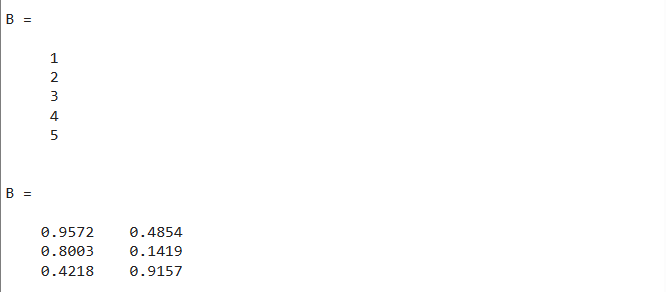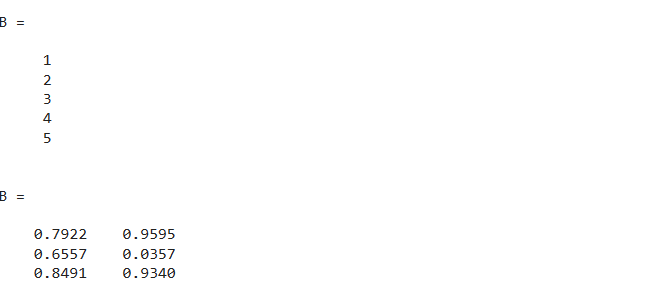What is the Transpose of the Vector?
The transpose of a matrix or a vector is a type of operation in MATLAB that changes the columns and rows of the original matrix. In other words, each row in an original matrix becomes the column in the transpose matrix.
Why Transpose of a Vector or a Matrix is Useful?
Finding the transposition of a vector or a matrix is useful for representing the Linear Transformation or changing the data in a spreadsheet from columns to rows and vice versa.
How to Find a Vector and a Matrix’s Transpose in MATLAB?
Finding the transpose of a vector can be done easily by:
1: How to Compute a Vector or a Matrix’s Transpose in MATLAB Using .’ Operator?
The .‘ operator is a commonly used symbol for transposing a matrix in MATLAB. This operator converts the rows of a matrix into columns when applied to a matrix and vice versa.
The following syntax is used for finding the transpose of a vector and a matrix in MATLAB using .’ operator:
Here:
B = A.’ computes the non-conjugate transpose of the given vector or matrix and changes the row and column index of each entry of the vector or matrix.
Example
In this example, we are going to find the transpose of the given vector and the matrix using the (.’) operator.
In this code, we convert a row vector having size 1-by-5 into a column vector having size 5-by-1 and we also compute the transpose of the matrix A having size 2-by-3 and convert it into matrix B having size 3-by-2.
2: How to Find the Transpose of a Vector and a Matrix in MATLAB Using Transpose () Function?
MATLAB also provides us with a built-in function for finding the transpose of a vector or a matrix. The function takes a matrix as an argument and returns the vector or matrix inverse.
The transpose() follows a simple syntax that is given below:
Here:
B = transpose(A) is another way of finding the transpose of the given vector or matrix. It works the same as the A.’.
Example
The following example uses the transpose() function to compute the transpose of the given vector v and the matrix A.
Conclusion
The transpose operation is useful in Mathematics that allows us to change the row and column index of each element of a vector or a matrix. In MATLAB, two functions are widely used: the (.’) operator and the transpose() function. Both methods are useful and discussed in this guide, taking only a matrix to easily convert its rows to columns and vice versa.


